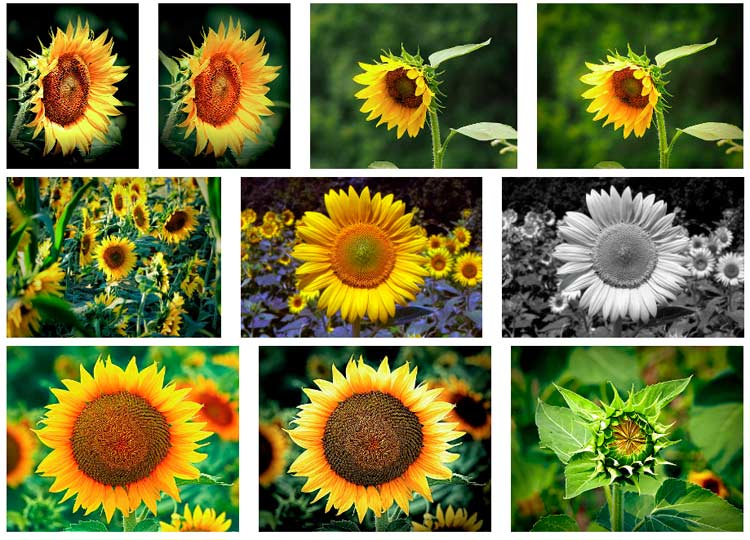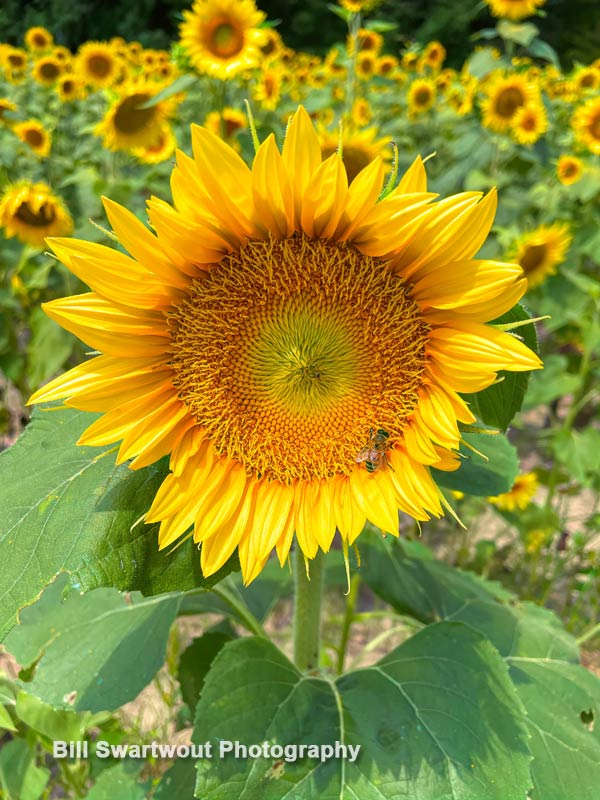Nearly everyone loves sunflowers, the most popular flowers of summer.
The sunflower stands tall to meet the rays of the midday sun – it stands tall and reaches high into the sky. Golden hues of sunshine are reflected in the petals, making this wonderful yellow bloom among the most popular flowers of summer.

A field of bright yellow sunflowers is one of summer’s most popular sights and with good reason. These cheerful, cheerful flowers are easy to grow, requiring only a sunny spot to thrive. Sunflowers are also easy to customize for any occasion: add stakes or wire for height, use in bouquets, or leave them out as the centerpiece on your kitchen table. Did you know the the flower petals within a sunflower’s cluster are usually in a a spiral pattern?

Sunflowers are usually yellow or orange. They can also be red or white, but yellow is the most common color for sunflowers. The petals on each flower all face one direction, making the sunflower look like a bright disc when it faces the sun. Sunflowers are native to North America and were first cultivated by Native Americans.
What’s not to love about sunflowers? They’re bright and cheerful, they grow in fields and on farms, and they are the most popular flowers of summer.
In fact, sunflowers have been grown for thousands of years—and they weren’t even originally intended to be flowers! They were actually used as a food source by Native Americans. The seeds were ground into flour or roasted like popcorn. Every 100 pounds of sunflower seeds yields about 40 pounds of oil, 35 pounds of high-protein meal and 20 to 25 pounds of other by-products.
Sunflowers are native to North America, but now grow all over the world. They have become an important part of many cultures around the globe, including China, Africa and South America. When Europeans got their hands on the plant it quickly became one of their favorite things to grow in their gardens.
Heliotropism – a plant’s propensity to face, and follow, the sun…
A young sunflower has a supple stem that responds to the sun. The flower will follow the sun from its rising in the east to setting in the west. Over night the stem will tend to grow more on the west side – from the “afternoon sun” and will make the head swivel back toward the east. This repeats every day for a part of the plant’s growth cycle. But as the plant matures and the head becomes laden with seeds and quite heavy, it can no longer swivel during the day. Therefore the older, larger and mature sunflowers tend to face east – toward the rising sun – and stay that way until the harvest.
Use the links below to browse or shop more of Bill’s photographs of Sunflowers and other Flora .
Link to: Sunflower Photographs
Link to: Bill’s Flora Collection
Link to: Bill’s full Gallery at Fine Art America/Pixels







